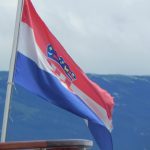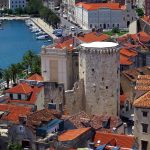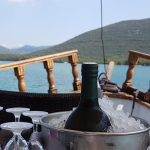September 22, 2019 – On the same day, Split scientist Jadranka Sepic received six million kuna and her third child.
“I was delighted when I was told that I had received the project, however, it was during the last days of my pregnancy, and then I was preoccupied with everything – I had a lot of good news over a few days,” scientist Jadranka Sepic said.
Thus, the extreme sea-level exploration project will last for five years and will start in September next year, reports RTL.
“Sea levels are projected to rise 40 to 60 centimeters globally, so that certain lower coastal parts of Europe will flood,” Sepic adds.
The most vulnerable area to climate change in Croatia is the Neretva Valley. With the sea level rising, almost all the waterfronts in the Adriatic will be flooded, as will most of the old town cores. By 2100, many cities will become a diver-only attraction.
“Flooding will occur more and more, and the old town cores, such as Trogir, Šibenik, and Rijeka, which are quite low-lying, and are especially endangered. Therefore, some preventive measures should be taken to avoid these floods such as raising the coast, the waterfront and the like,” she noted.
The goal in the future is to analyze meteorological situations that are conducive to flooding, although rising sea levels don’t seem to be a concern for citizens of Split.
“When it comes to the sea, I’m not afraid of anything. If it comes to that, I would be willing to wait and let the sea level come up to my chin. I would wait there without fear,” says Mate Ivic from Split.
“As a physicist, I am not afraid of rising sea levels so much. I don’t think it can really grow so much that it can hurt the world,” said Maja Stojanovic from Novi Sad.
“I suppose it won’t go so fast, but we really have to pay attention to nature and what is given to us by God,” says Peter Bulat.
Otherwise, Croatia is the second most unsuccessful country after Bulgaria in utilizing EU funds for such projects.
“I suppose that the low pass rate of Croatian scientists is primarily the result of the small number of people applying and that people need to be encouraged to apply, to write their ideas, and I believe that they will then receive more projects,” Sepic added.
Considering the statistics, the success of this Split scientist is even greater!
To read more about lifestyle in Croatia, follow TCN’s dedicated page.







